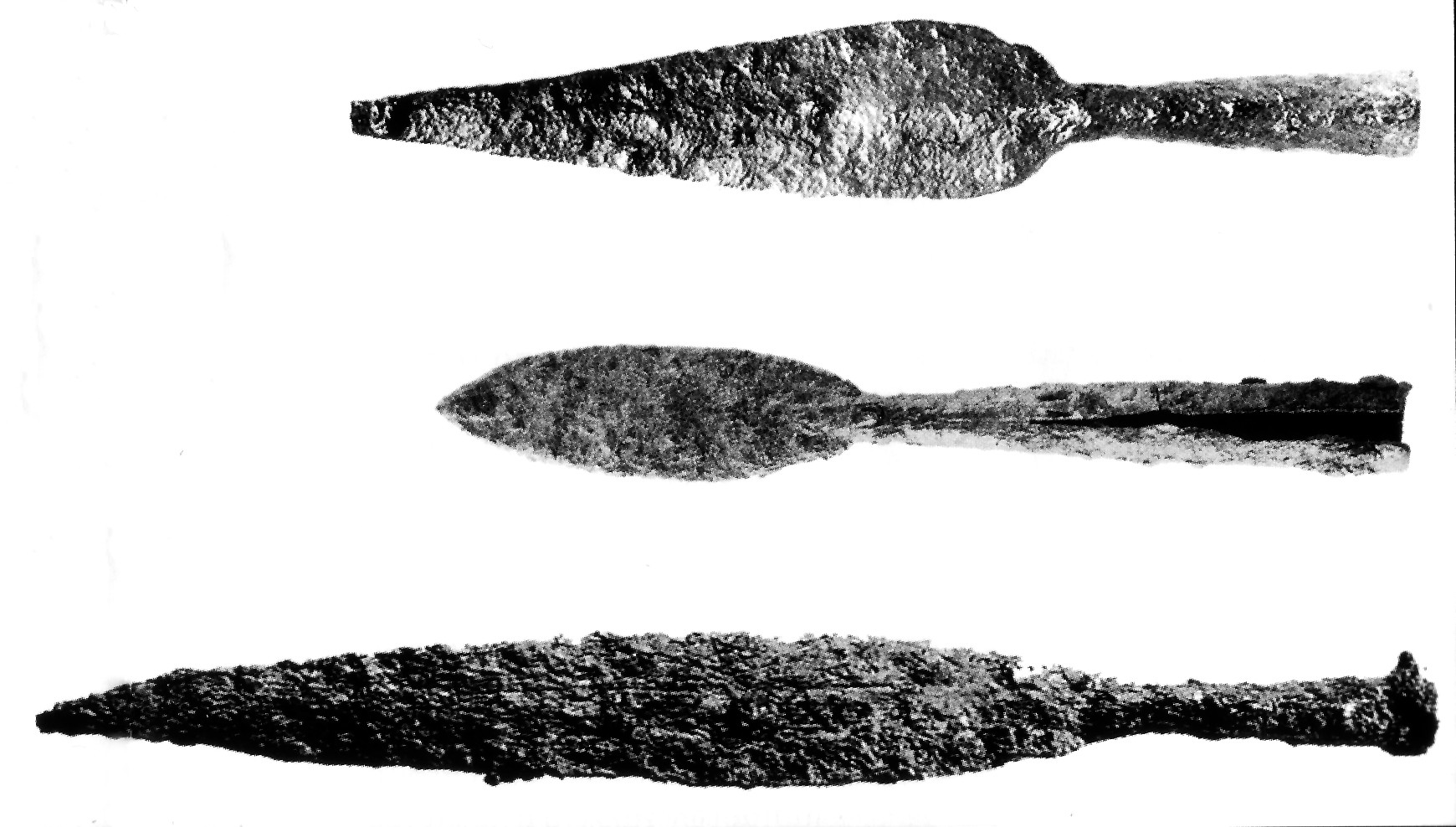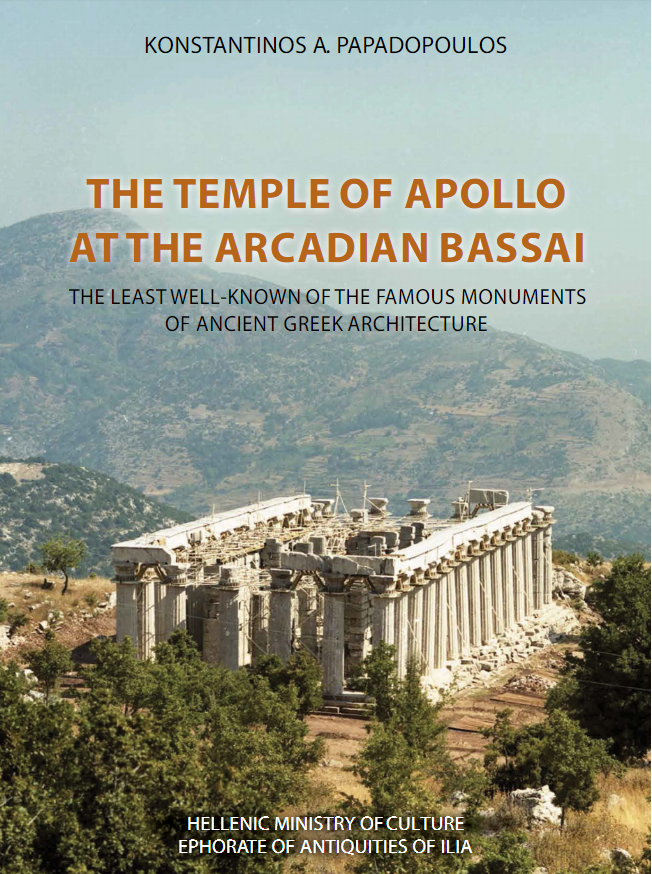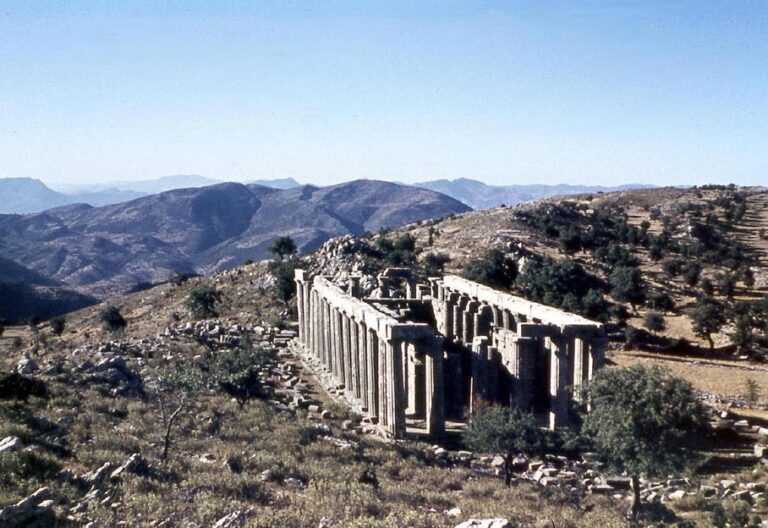The archaeological surveys in the area of Bassae proved that the site where the temple stands today was sacred already since from the 8th century BC and probably dedicated to the worship of a war god as the movable finds from the embankments in the surrounding area of the temple of Apollo indicate.
These are armaments such as arrowheads and spearheads, as well as bronze imitations of weapons (spears, helmets, shields, etc.), in small dimensions which were tributes to the god.
Among the findings are two male statuettes which are likely to depict the worshiped deity and are so far the earliest tributes that have been discovered.
A little later, in the 7th c. BC the inhabitants of Figalia, an important Arcadian city, turn to and find help in Apollo, god of light, logic and divination.
The event that prompted them to take refuge in Apollo is related to the siege and occupation of their city by the Spartans and is placed in time around 659 BC.
The Phigaleans managed to liberate their city by following an omen of the Delphic Oracle that urged them to fight the Spartans not alone, but with a hundred elite men from the Arcadian city of Oresthasion which was located in the Megalopolis basin.
Indeed, the expulsion of the Spartans was accomplished, and the Phigaleans were restored to their city, the Oresthasians having previously been reduced to one in battle. After this feat, the Phigaleans honored them by erecting a monument in the marketplace of their city and dedicated to the Epicurean Apollo, their helper and savior, a temple at Bassae on Mount Kotilion.
The construction of this temple is estimated at the end of the 7th century. BC

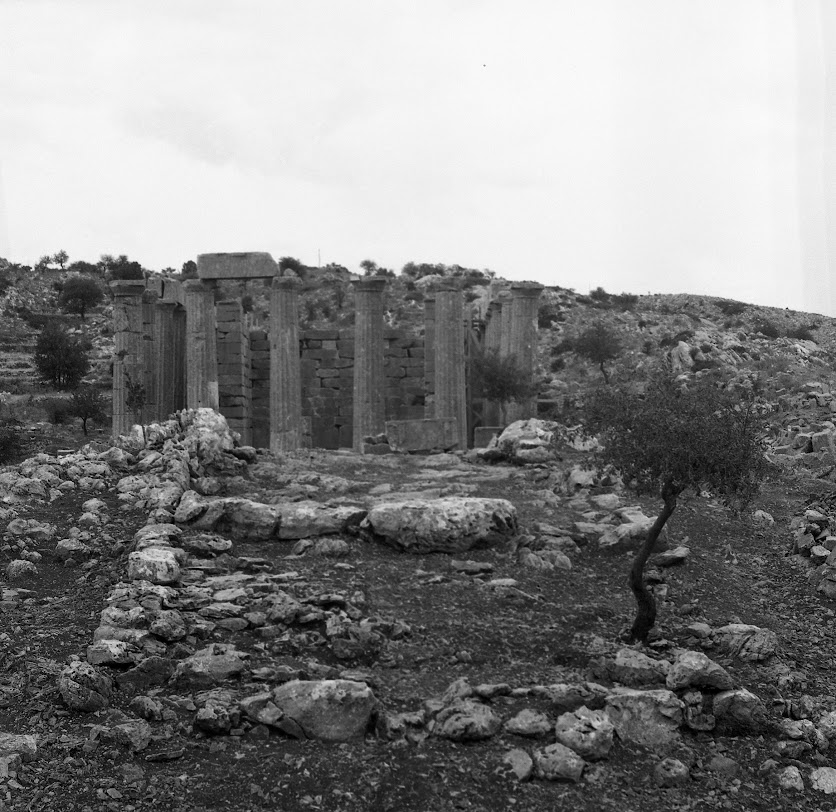
Regarding the position (or positions) of the successive temples of Apollo that preceded the present classical monument, many opinions have been expressed until today. According to the prevailing theory, the remains of the foundations of a large archaic building near and south of the classical monument belong to the first temple of Apollo.
This archaic temple was also oriented to the N., it did not have a wing while its walls were brick with wooden reinforcements and it was richly decorated with clay elements. Moreover, as happens in the classical monument, its interior is divided into two parts, of which the southern one must have been the adyton, which had an opening to the east.
Fragments of clay tiles were saved from this archaic temple and from its disk-shaped acroterion, which allowed its restoration and completion. It was established on the roof, above the pediment and had written decoration with geometric patterns. It is similar to the central acroterion of the temple of Hera in Olympia that visitors to its Archaeological Museum can see.
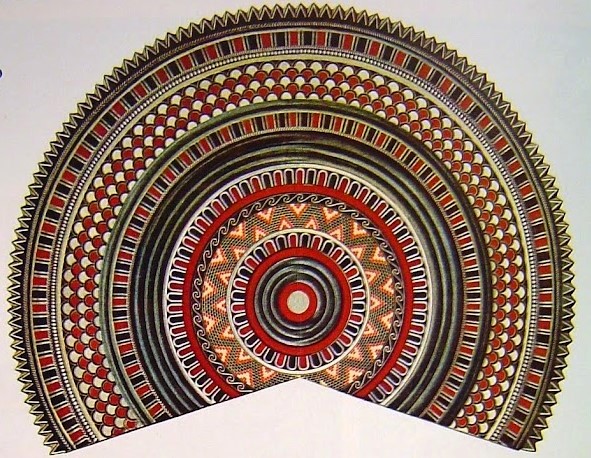
Ναός Επικούριου Απόλλωνα
Clay discoid acroterion of the archaic temple of Apollo
Written decoration with geometric patterns
According to other scholars, it is possible that the classical temple was built on the foundations of an older building, dating perhaps in 500 BC or earlier with the same orientation, as is the case with other sanctuaries in the area, such as in temple of Athena and Zeus Sotiros in Kourdoubouli in ancient Figaleia and in the Doric temple of Athena in Alifeira.
Around the archaic temple of Apollo, (which seems to have had two or three building phases) a small settlement developed, which continued to exist during the Classical era. Fugitive Messenians driven out by the Spartans must have settled on the site of the sanctuary around 650 BC.
The findings of this period include jewelry such as rings, studs, pins as well as numerous vessels (miniature or normal size) such as aryballos and cylix, while among them is a lyre speaker made of turtle shell. Many of the findings of the Bassae are exhibited today in the Archaeological Museum of Pyrgos.
The remains of metalworking, which were also discovered near the temple, testify that during archaic times there must have been a metallurgical workshop in the area.
The eminent archaeologist Nikolaos Gialouris, who carried out excavations in Basse for many years, reports that the temple was located among numerous buildings, some of them monumental, of the archaic and classical times. He also argued that many of the movable finds that were imported (from Elis, Corinth and Laconia), as well as several lead votives reveal the relations of the Bassae sanctuary with various regions of the Peloponnese and especially with Laconia.
In classical times, the warlike nature of the god was transformed into a peaceful one, and worship was directed to Apollo the healer/Epicurean god because he protected the Phigaleans from the spread of an epidemic disease, which had affected the Greek area during the Peloponnesian war.





